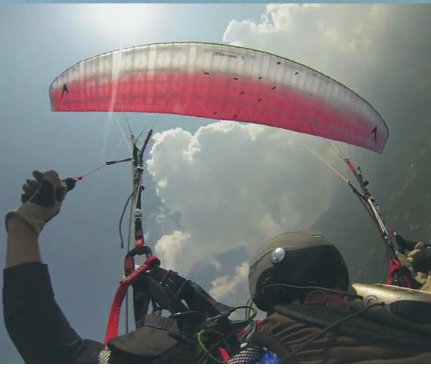Swing Mistral 7 M |
|||||||||||||||||||||||||||||||||||||||||||||||||||||||||||||||||||||||||||||||||||||||||||||||||||||||||||||||||||||||||||||||||||||


|
|||||||||||||||||||||||||||||||||||||||||||||||||||||||||||||||||||||||||||||||||||||||||||||||||||||||||||||||||||||||||||||||||||||
Instability rating |
|||||||||||||||||||||||||||||||||||||||||||||||||||||||||||||||||||||||||||||||||||||||||||||||||||||||||||||||||||||||||||||||||||||
|
|||||||||||||||||||||||||||||||||||||||||||||||||||||||||||||||||||||||||||||||||||||||||||||||||||||||||||||||||||||||||||||||||||||
Glider characteristics |
|||||||||||||||||||||||||||||||||||||||||||||||||||||||||||||||||||||||||||||||||||||||||||||||||||||||||||||||||||||||||||||||||||||
|
Launch preparations: difficult
launch characteristics: delayed, delayed climb,needs pronounced guidance, minimal feedback during inflation, little braking required, slows before zenith, control check simple, low takeoff speed
asymmetric collapse: canopy colllapses at high angle to leading edge, high dynamics, total course change >360°, (5), fast course change rate, marked forward pitching 60-75°, (4), high height loss 40-49 m, (3), moderate sink velocity 15-19 m/s, (2), collapse on opposite wingtip with course change <90°, (4), G-Force < 2,5 G, (1)
Frontal collapse: canopy collapses with high total collapse aera, marked pitch backwards 45-60°, marked pitch forwards 45-60°, moderate dynamics, no course change, (1), variable recovery behaviour, at times with stable closed frontal collapse, at times with automatic recovery, (4), usually symmetric recovery, simple pilot action required, (4), immediate return to normal airspeed, high height loss 40-49 m, (3), low sink velocity 10-14 m/s, (1)
Spiral dives: moderate sink velocity increase, Moderate G-Force 3,5- 4.0 G, (2), Sink velocity after 720° <18 m/s, (3), High maximum sink velocity < 22 m/s, (3), sink velocity increase < 3 m/s on brake release, (1), Course change 360-540° after spiral exit, (3), high height loss during recovery 60-100 m, (3)
B-Stall: normal force required, moderate pitch backwards 15-30°, marked pitch forwards 30-45°, unstable sink phase, high deformation tendency, immediate return to normal airspeed, 6-8 m/s, height loss on recovery < 20 m
big ears: simple initiation, unsteady flight phase, wingtips flatter a little, immediate automatic recovery, Vsink unaccelerated 2,5-3 m/s, Vsink accelerated 3-3,5 m/s, Vunaccelerated 3-5 km/h less than trimspeed, Vaccelerated 5-8 km/h faster than trimspeed |
|||||||||||||||||||||||||||||||||||||||||||||||||||||||||||||||||||||||||||||||||||||||||||||||||||||||||||||||||||||||||||||||||||||
Notes |
|||||||||||||||||||||||||||||||||||||||||||||||||||||||||||||||||||||||||||||||||||||||||||||||||||||||||||||||||||||||||||||||||||||
|
en: Startvorbereitungen: Wegen der vielen unummantelten Leinen anspruchsvoll Startverhalten: Verzögertes Steigen, deutliches Führen erforderlich, am Scheitel nur moderates Anbremsen erforderlich, Tendenz zum seitlichen Ausbrechen. Seitliche Einklapper: Gerät klappt tief in die Fläche und zeigt ein dynamisches Wegdreh-Verhalten. Weiters Vorschießen und Wegdrehen teils > 360°. Gegenklapper möglich mit nur geringer Richtungsänderung. Keine Verhängertendenz feststellbar. Verhalten an der Grenze zur nächst niedrigeren Klasse. Frontklapper: Wegen der hohen Streckung indifferentes Verhalten. Teils schnelle Wiederöffnung, teils Ansätze zu stabilem Frontklapper. Diese sind mit einfachem Piloteneingriff schnell zu öffnen. Steilspirale: Für ein High-Level-B-Gerät überschaubares Verhalten. Stabile Spirale war nicht feststellbar, Nachdrehen jedoch deutlich bis ca. 540° mit hoher Sinkgeschwindigkeit und einem Höhenverlust für die Ausleitung von knapp 100 m. B-Leinen-Stall: Gerät ist für diese Abstiegshilfe nicht besonders gut geeignet. Nach kurzer stabiler Sinkphase deformiert die Kappe über die Flächenmitte und will nach vorne in die Rosette umschlagen. Ohrenanlegen: Unbeschleunigt und beschleunigt leichtes bis mäßiges Schlagen der Ohren, jedoch ohne deutliche Gier-Tendenzen. |
|||||||||||||||||||||||||||||||||||||||||||||||||||||||||||||||||||||||||||||||||||||||||||||||||||||||||||||||||||||||||||||||||||||
Rating |
|||||||||||||||||||||||||||||||||||||||||||||||||||||||||||||||||||||||||||||||||||||||||||||||||||||||||||||||||||||||||||||||||||||
|
Safety class 5 This class of paraglider reacts very demandingly to one or more of the following manoeuvres: frontal collapse, asymmetric collapse or spiral dive and may present pilots with a particular challenge.Very demandingly means that the above manoeuvres result in highly dynamic reactions from the glider, and/or large height losses. Critical subsequent glider reactions are also to be expected. Expert piloting skills achieved through constant practice, fast personal reaction times and precise pilot inputs are required to be able to immediately react to the above manoeuvres to maintain flight control and prevent large height loss or subsequent critical glider reactions. In particular, pilots should be able to recognise the onset of the above manoeuvres and be able to prevent or minimise their effects through immediate and precise pilot inputs. |
|||||||||||||||||||||||||||||||||||||||||||||||||||||||||||||||||||||||||||||||||||||||||||||||||||||||||||||||||||||||||||||||||||||

